

Orival Wood Cemetery
Location
Flesquières is a village approximately five kilometres south-west of Cambrai and about five kilometres south of the main road (N30) from Cambrai to Bapaume. From the village of Flesquières take the Cantaing road, D92, to its junction with the D89 (opposite Flesquieres Hill British Cemetery), where the first CWGC sign is situated. The Cemetery lies on the left side of this road, the D89, 800 metres from the junction.
| GPS | N | E | OSM |
|---|---|---|---|
| Decimal | 50.131769 | 3.130245 | Map |
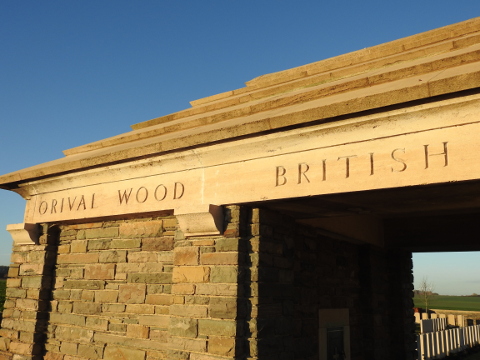
Historical Information
Flesquières was attacked by the 51st (Highland) Division, with tanks, on the 20th November 1917, in the battle of Cambrai, but held for a time by a German officer with a few men ; it was captured on the 21st. It was lost in the late stages of the battle, and retaken on the 27th September 1918, by the 3rd Division.
The Bois d’Orival is a small wood on the road from Flesquières to Fontaine-Notre Dame, cleared by the 2nd Grenadier Guards on the 27th September 1918.
The Cemetery was begun in November 1917, during the Battle of Cambrai; used again in September-October 1918; and enlarged in 1930 by the transfer of graves from the following cemeteries :
- The 51st Division Cemetery, Flesquières, was almost one kilometre south of Flesquières on a sunken track running to the railway line and on towards Havrincourt. It was made by the Divisional Burial Officer, and it contained the graves of 74 officers and men of the 51st (Highland) Division and the Tank Corps, who fell in the last eleven days of November 1917.
- Flesquières Château Cemetery was near the Havrincourt road and just outside the Château grounds. It was used by fighting units from November 1917, to March 1918 ; for one burial in September 1918; and for the burial of a Chinese labourer in February 1919. It contained, in all, 135 graves.
There are now nearly 300, 1914-18 war casualties commemorated in this site. Of these, ten are unidentified and others, identified collectively but not individually, are marked by headstones bearing the superscription, “Buried near this spot”. Special memorials record the names of two United Kingdom soldiers, buried in Flesquières Château Cemetery, whose graves could not be found.
There are also 20 German burials here. The cemetery covers an area of 794 square metres and is enclosed by a stone rubble wall.
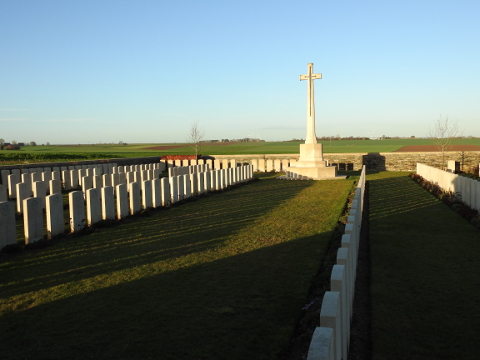
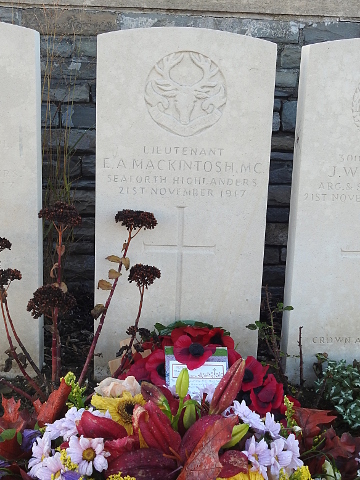
Lieutenant Ewart Mackintosh MC
5th Bn Seaforth Highlanders
Died on 21st November 1917 aged 24
A noted war poet, his poems
“A Highland Regiment” and “War, The Liberator”
were published in 1917 and 1918 respectively.
Grave: I A 26
Mackintosh’s poem, A Creed is quoted on the Scottish American War Memorial in Princes Street Gardens in Edinburgh :
If it be life that waits I shall live for ever unconquered,
If death I shall die at last strong in my pride and free.
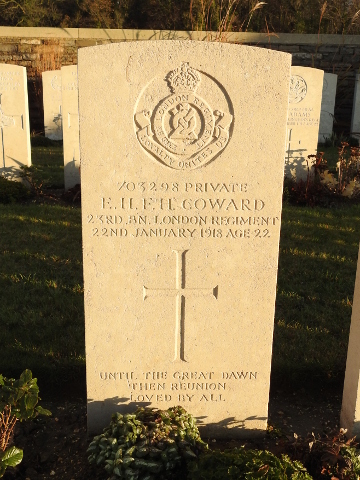
Private Edward Coward 703298
1/23rd Bn London Regiment
Died on 22nd January 1918 aged 22
Son of Edward and Christina Coward
of 14, Ram Square, Wandsworth, London
Grave: II A 5

Major Greville Bagot-Chester
2nd Bn Scots Guards
Died on 28th November 1917 aged 52
Son of the late Col. Heneage Charles Bagot-Chester
and Mrs. Bagot-Chester.
Grave: II A 13
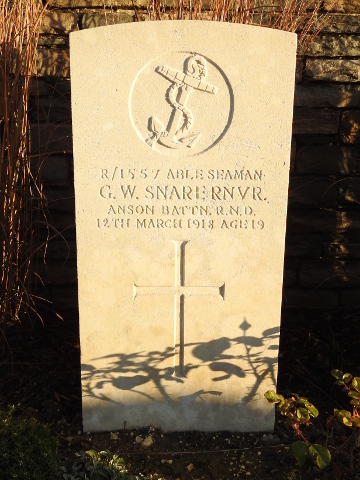
Able Seaman G Snare R/1557
Anson Battalion
Royal Naval Division
Died on 12th March 1918 aged 19
Son of Mrs. John Snare
of Chamberlain Buildings, Priswell, Brandon, Suffolk
Grave: II C 8
